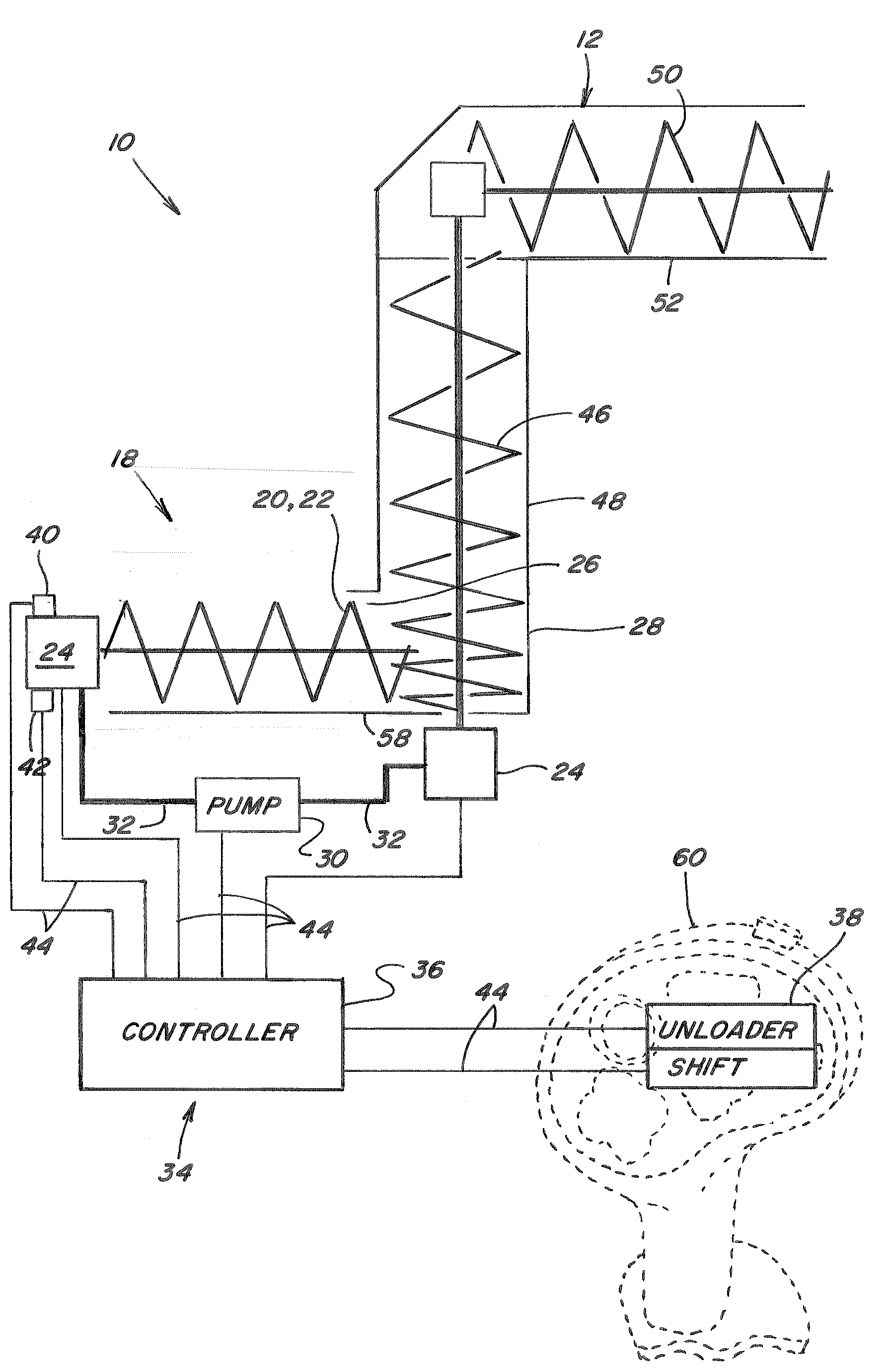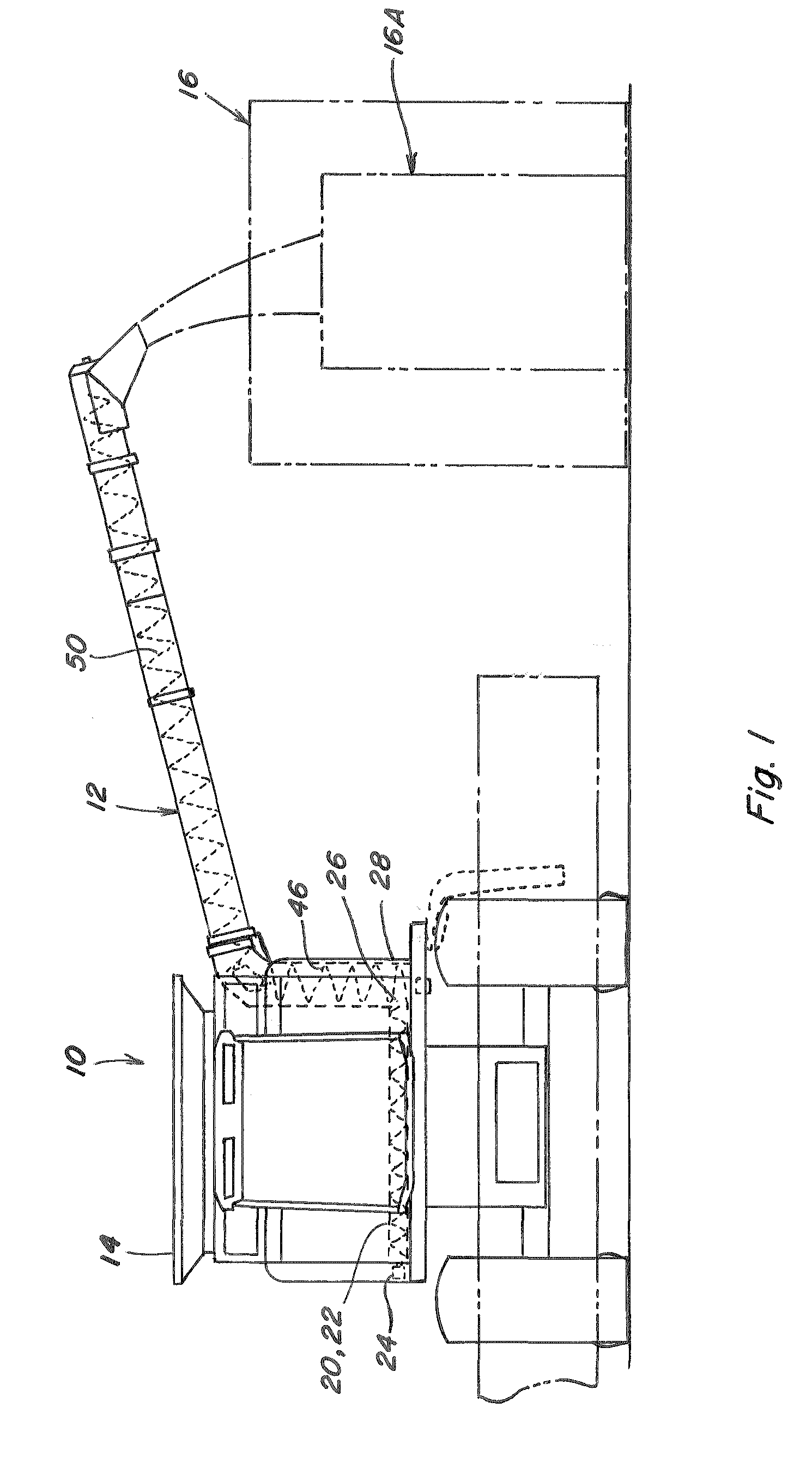Adaptive rate control for feeding grain to a grain unloader conveyor
a technology of unloading conveyor and adaptive rate control, which is applied in the direction of loading/unloading vehicle arrangment, transportation and packaging, transportation items, etc., can solve the problems of reducing the working life of components, reducing the efficiency of vertical unloading auger, and excessive start up torque of loaded conveyors, so as to avoid high start up torque spiking, the effect of little or no capacity for receiving additional grain
- Summary
- Abstract
- Description
- Claims
- Application Information
AI Technical Summary
Benefits of technology
Problems solved by technology
Method used
Image
Examples
Embodiment Construction
[0024]Referring now the drawings, in FIG. 1, a representative agricultural harvesting machine 10 is shown, including an unloader conveyor 12 operable for unloading grain from a grain holding device, which is a conventional grain tank 14, located on an upper region of harvesting machine 10. Here, harvesting machine 10 is depicted as a well known, commercially available combine operable for harvesting a wide variety of grains, including, but not limited to, wheat, beans, corn, rice, and the like. Typically, the grain is harvested and threshed from stalks, pods, or other crop material, and conveyed away from a cleaning system of machine 10 by a clean grain conveyor to a grain elevator (not shown). The grain elevator then lifts the grain upwardly to a grain delivery conveyor which is operable for discharging the grain into grain tank 14. When grain tank 14 is filled with grain, or filled to a desired level, unloader conveyor 12 can be operated for unloading the grain from tank 14, onto ...
PUM
 Login to View More
Login to View More Abstract
Description
Claims
Application Information
 Login to View More
Login to View More - R&D
- Intellectual Property
- Life Sciences
- Materials
- Tech Scout
- Unparalleled Data Quality
- Higher Quality Content
- 60% Fewer Hallucinations
Browse by: Latest US Patents, China's latest patents, Technical Efficacy Thesaurus, Application Domain, Technology Topic, Popular Technical Reports.
© 2025 PatSnap. All rights reserved.Legal|Privacy policy|Modern Slavery Act Transparency Statement|Sitemap|About US| Contact US: help@patsnap.com



